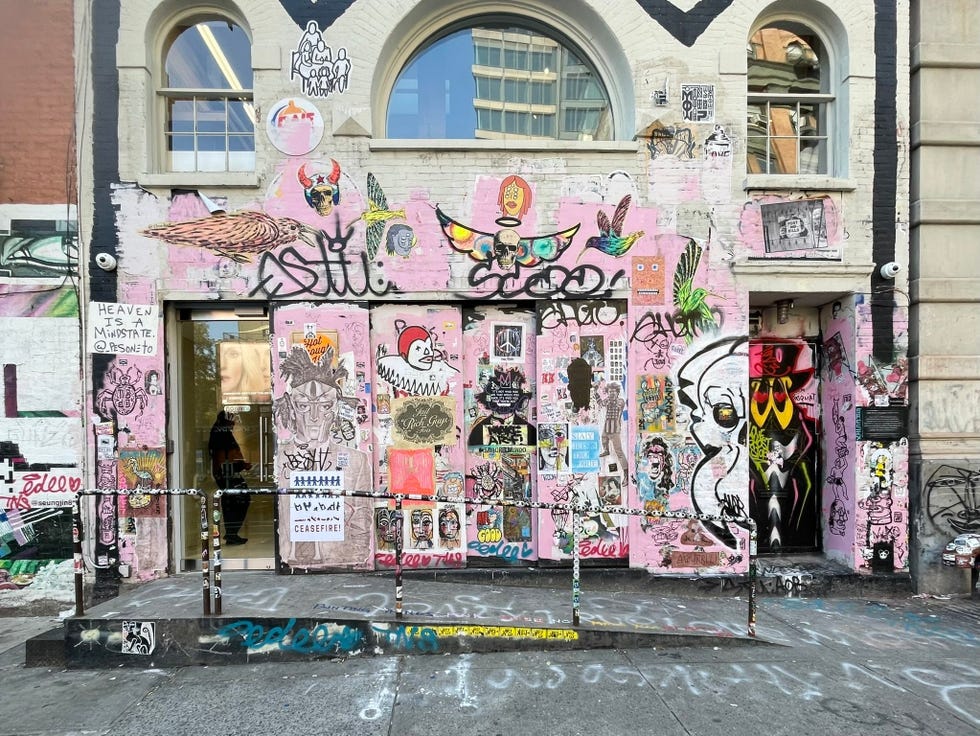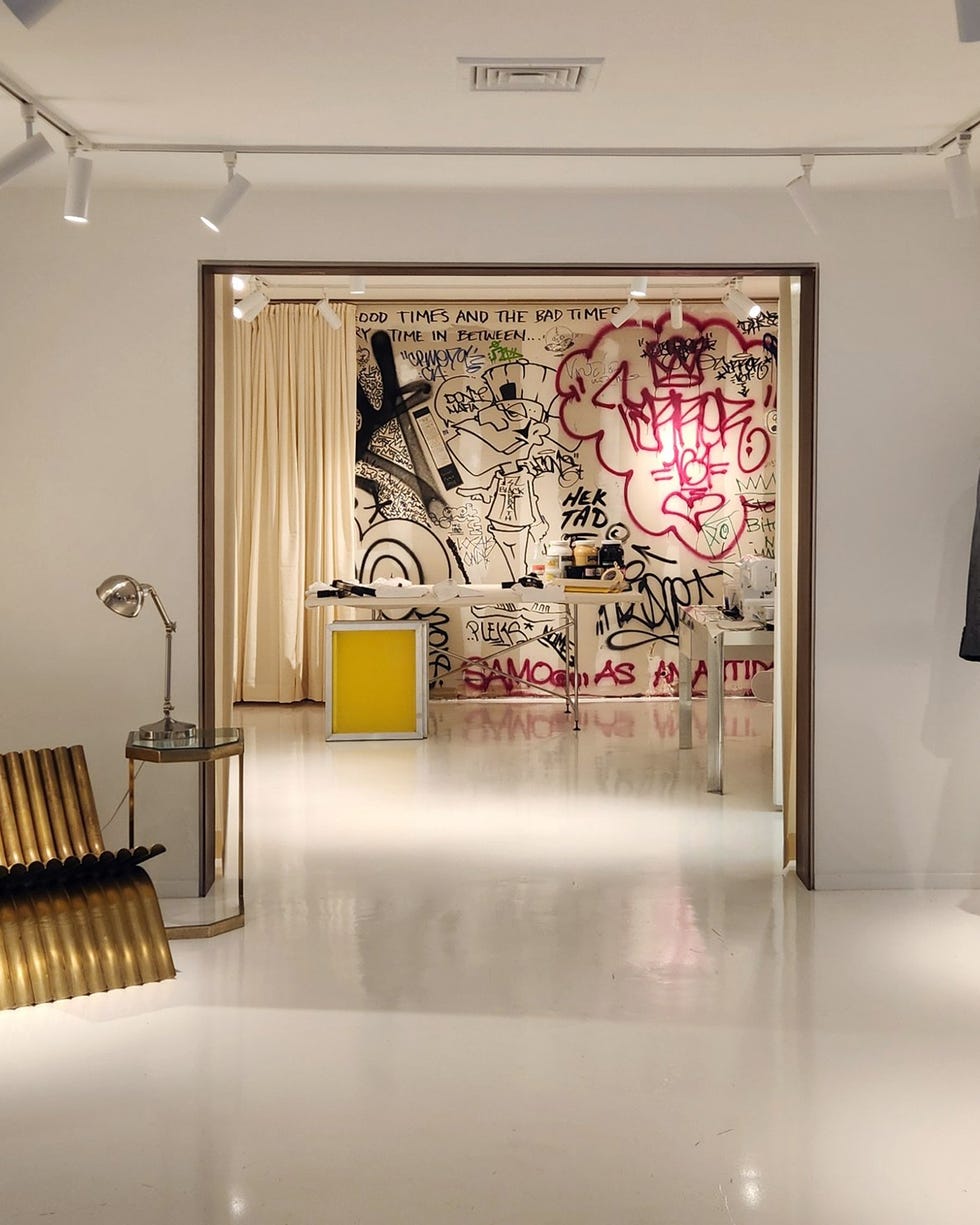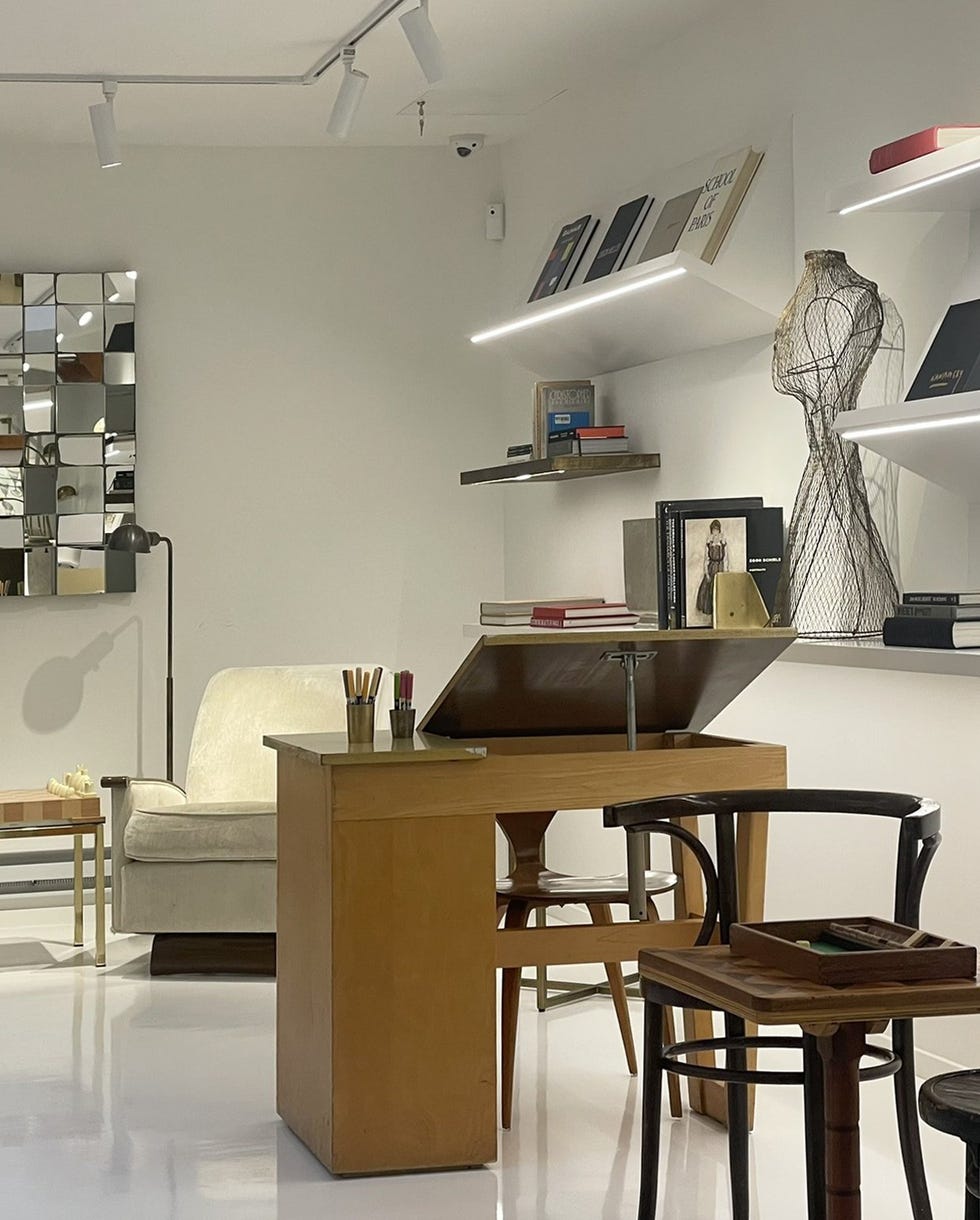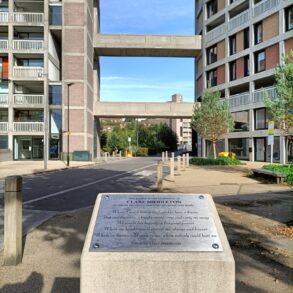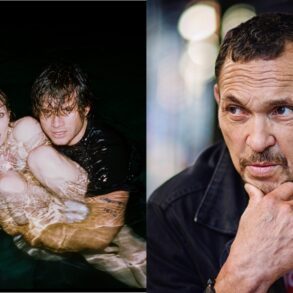In New York City, it’s quite common for unassuming homes and office buildings to be a part of cultural history. Angelina Jolie’s latest venture is no different. Once a butcher shop and then the New Brighton Athletic club headquarters, 57 Great Jones Street is now Atelier Jolie, a hub for the contemporary art community. But Jolie isn’t the only well-known name associated with this space: Andy Warhol owned the building for over 20 years, and then eventually leased it to Jean-Michel Basquiat (his final home and place of his death in 1988). Jolie has now taken over the iconic building in the East Village and embarked on a gut renovation with the architecture firm bonetti/kozerski.
After a six-month bidding process for permission to lease the space—there were a number of offers, but the management company felt as though Jolie had the best vision for the building—architect Enrico Bonetti got to work on plans to bring what is now Atelier Jolie to life. No stranger to conceptualizing luxury storefronts (Bonetti has worked with brands like Tod’s, Donna Karan, and Audemars Piguet), the primary goal for this multifunctional atelier was for it to serve as a blank slate for whatever Jolie was to dream up.
House Beautiful sat down with Bonetti to discuss the monumental task of restoring and updating a building that means so much to the art world.
The Challenge of a Public Renovation
Like most celebrity ventures, this project was initially shrouded in secrecy. However, when the news of Jolie’s art atelier broke, the reaction was a bit different than your usual internet hype.
“She interviewed with, I think it was Vogue or something similar, and it became known to the public,” recalls Bonetti. But even without the significant star power behind the building, the exterior also calls attention to itself in a major way—it’s covered with vibrant, commissioned graffiti that pays homage to Basquiat’s roots as a street artist.
“Graffiti artists started to come to the building while we were in the middle of construction,” Bonetti continues. He notes that the state of the façade was changing almost daily once the public became aware. “They would come at night, and so for a while the exterior became pink, and then it changed again,” he says. “There’s a historic value that a certain type of people in the art community and graffiti community connect with the building itself, not the inside, so it’s the façade that gets all the attention.”
Restoring a Landmark
Unlike a typical historic preservation project, which involves months of planning, permits, and permissions, there weren’t many original features to protect and restore in the space Atelier Jolie now occupies. The focus was the exterior. Inside, a gut renovation took place, but Bonetti maintained a sense of reverence for the building’s history. Though some of the interior walls are covered by graffiti, none of it was done by Basquiat himself; young painters often paid tribute to him and left their marks on the interior walls.
“We kept some of those in a central area, but we covered them with curtains just so [Jolie] can either have them in, or she can leave them in the back and have other things stand in front,” Bonetti says. “Things like that become very strong, then they can unbalance whatever you’re doing in the space, so they’re behind the curtains. If she wants, she can open them up and have the graffiti be the protagonist. But that was pretty much what was left there when we started.”
Creating a Chameleon-Like Storefront
Part speakeasy, part retail, part art studio, Atelier Jolie was designed for more than just shopping.
“We tried to keep it as visually simple as possible, without making a big distinction between one area and the others, so everything flows more gently,” says Bonetti. “The goal was to make it as functional as possible, so she can also change her mind, change the program if she wants to, we try to connect the different parts of the building in an efficient way.” A similar aesthetic, very white and minimal, was kept throughout to allow whatever Jolie brought in to really stand out.
On the main floor, a gallery/retail section runs the length of the space, leading to a restaurant in the back, Eat Offbeat Café. Upstairs, there’s ample studio space for two people, an artist in residence, and a designer in residence, both chosen by Jolie. At the time of publishing, Prune Nourry and the Catharsis Arts Foundation occupy both sections. Lastly, the building’s basement serves as a multiuse space for workshops, more exhibitions, and performances, all run by The Invisible Dog Art Center.
Follow House Beautiful on Instagram and TikTok.
This post was originally published on this site be sure to check out more of their content.





